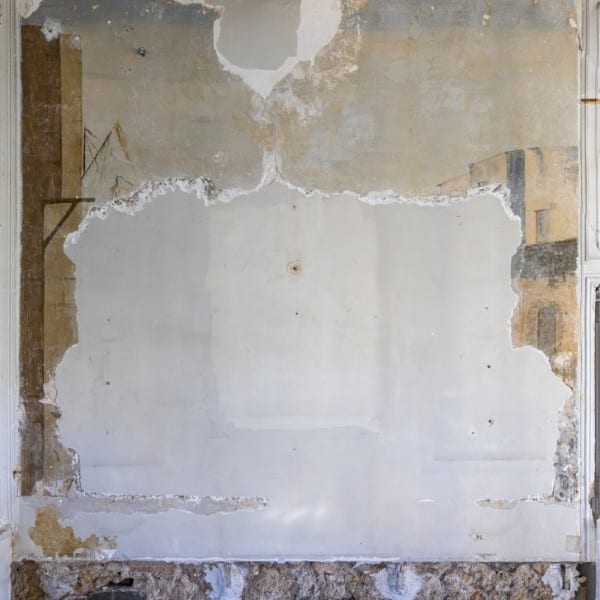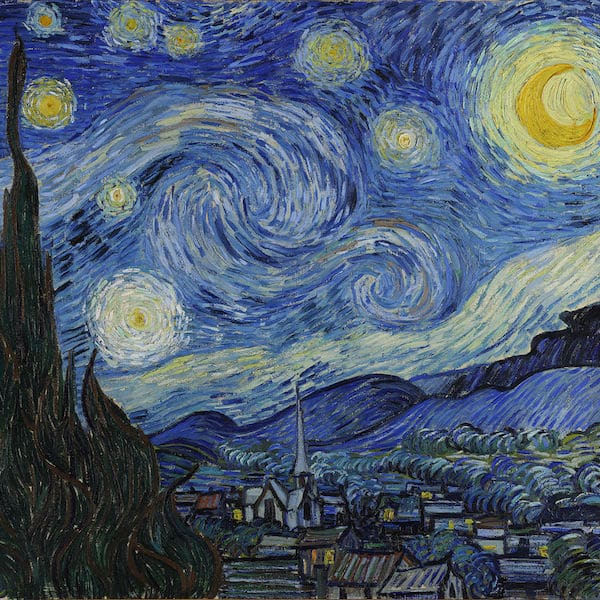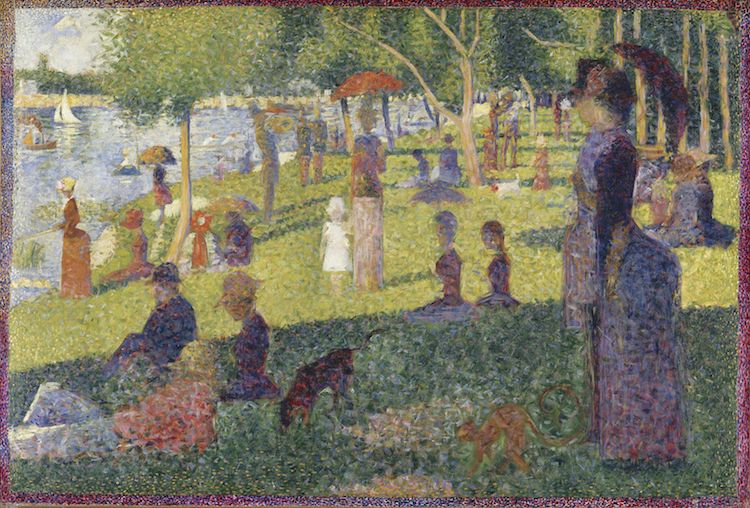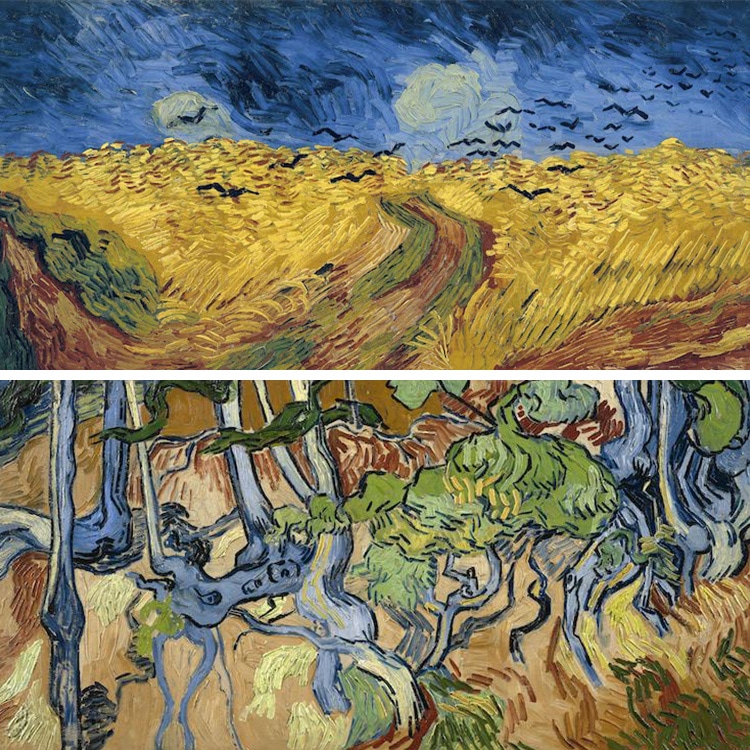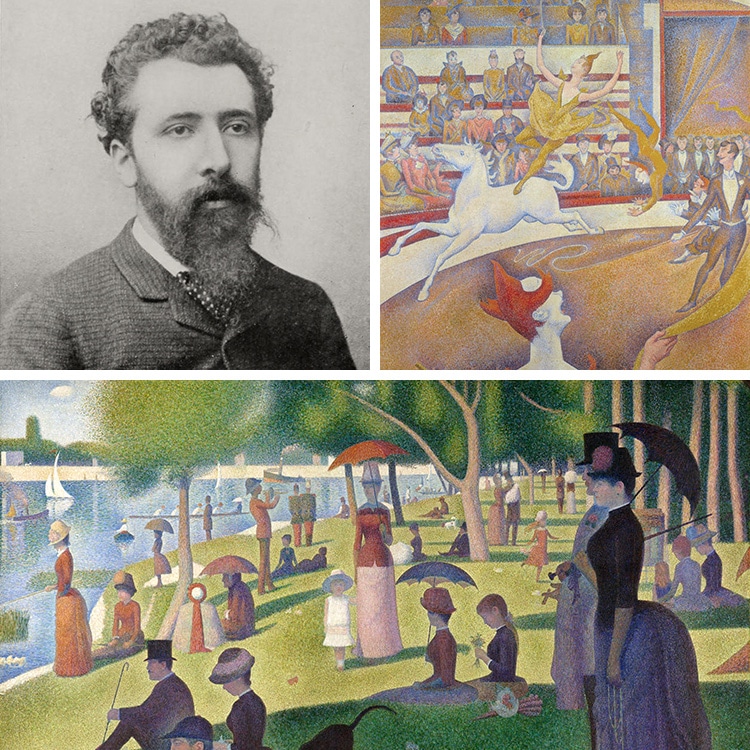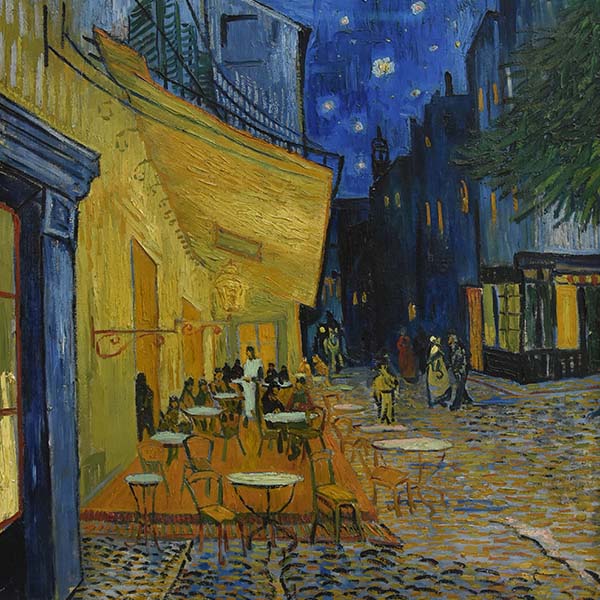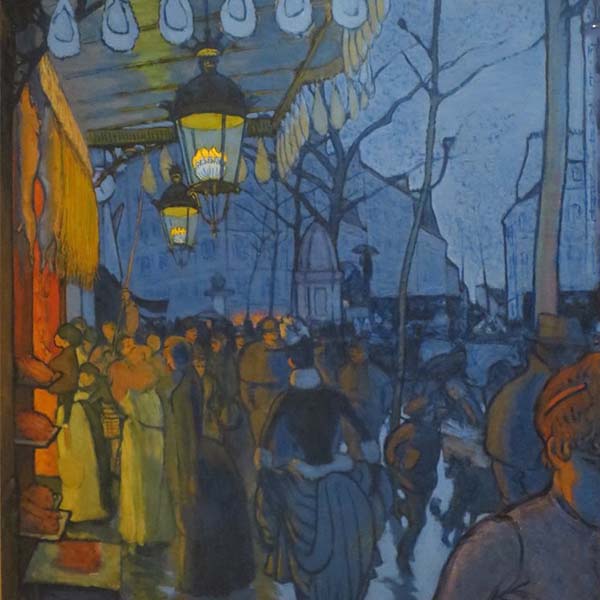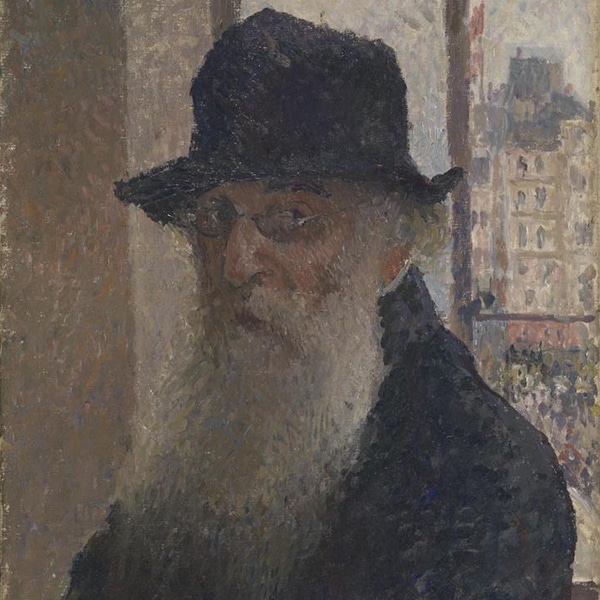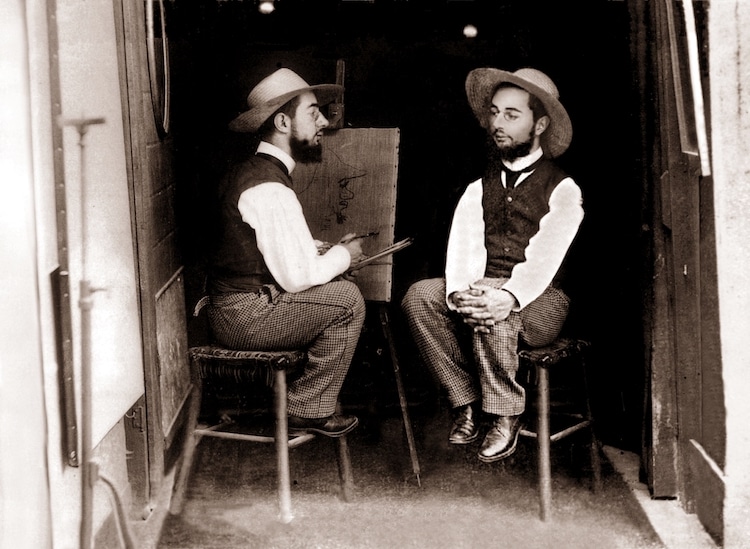
Gelatin silver print by Maurice Guibert of Henri de Toulouse-Lautrec as both artist and model (Photo: Wikimedia Commons, Public domain)
Some of the most famous artists of the Post-Impressionist movement include Paul Gauguin, Vincent van Gogh, and Paul Cézanne, but there is another artist who helped pioneer it—Henri de Toulouse-Lautrec. The French artist was a prominent painter, printmaker, draftsman, and illustrator (to name just a few of his trades). His artistic legacy, although connected to his creative peers, captured a different side of 19-century Parisian life, focusing instead on the theatrical characters which accompanied Toulouse-Lautrec's bohemian lifestyle.
Although Toulouse-Lautrec's graphic posters speak for themselves in their enduring energy and design, it is meaningful to know their heritage. Here, we present six essential facts about Toulouse-Lautrec's fascinating yet tragically short life.
Here are six facts about Post-Impressionist artist Henri de Toulouse-Lautrec's fascinating, bohemian life.
Toulouse-Lautrec was a nobleman.
Toulouse-Lautrec is one of the few accomplished artists to come from aristocratic heritage, making him a rarity in western art history. His full name at birth was Henri Marie Raymond de Toulouse-Lautrec-Monfa, the eldest son of the Comte (or Count) de Toulouse-Lautrec-Monfa.
It was customary for aristocratic families to practice patronage of the arts rather than working with their hands. However, after the separation of his parents when he was eight years old, Toulouse-Lautrec stayed with his mother, who allowed him to practice drawing as he wanted.

Henri de Toulouse-Lautrec by Maurice Guibert, 1892 (Photo: Wikimedia Commons [Public Domain])
He suffered from a life-long disability.
Alongside his graphic prints, Toulouse-Lautrec is perhaps best known for his short stature. Due to two separate accidents at the ages of 13 and 14, Toulouse-Lautrec broke both of his femurs. Unfortunately, these traumatic injuries combined with congenital health conditions he inherited from a family history of inbreeding permanently stunted Toulouse-Lautrec's growth at 4 foot 8 inches.
As a member of high society, this disability resulted in major effects on the artist's life. Since he was unable to engage in the same outdoor activities as his peers, Toulouse-Lautrec's creative interests were encouraged by his family. The combination of talent and family connections soon fast-tracked him into several studios across Paris.
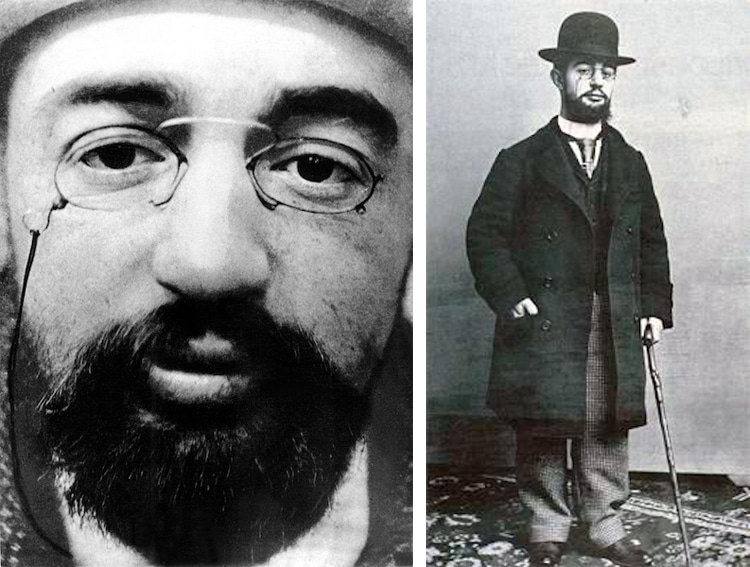
Left: Stock Photos from Everett Historical/Shutterstock; Right: Henri de Toulouse-Lautrec, 1894 (Photo: Wikimedia Commons [Public Domain])
Toulouse-Lautrec studied with Vincent van Gogh.
During his five-year stay at the studio of Fernand Cormon in Montmartre, Toulouse-Lautrec met other emerging Post-Impressionist artists, including Émile Bernard and Vincent van Gogh—the latter of whom he sketched in pastel. The friendships Toulouse-Lautrec made at Cormon's studio greatly influenced his art.

“Portrait of Vincent van Gogh,” Henri de Toulouse-Lautrec, 1887 (Photo: Wikimedia Commons [Public Domain])
Toulouse-Lautrec was inspired by Parisian nightlife.
Since he felt shunned by the elite society, Toulouse-Lautrec delved instead into the theatrical underbelly of Paris. There, amongst sex workers and performers, he was less conscious of his appearance and was creatively inspired by the bohemian surroundings. Some 150 of the artist's drawings and paintings are of the women he met at brothels.

“Ambassadeurs: Aristide Bruant Dans Son Cabaret,” Henri de Toulouse-Lautrec, 1892 (Photo: Wikimedia Commons [Public Domain])
He blended fine art with commercial art.
At the time, the commission of designing posters and prints was considered beneath the skills of a fine artist, yet Toulouse-Lautrec happily accepted the requests. In 1889, he designed a series of lithograph posters to publicize the opening of the Moulin Rouge cabaret—the likes of which are still remembered today as some of his most enduring works.
In his posters, Toulouse-Lautrec employs masterful use of the line to characterize well-known performers of the time, including Yvette Guilbert, Louise Weber, and Jane Avril. His draftsmanship captured the movement of dance and the energy of Parisian nightlife during the Belle Epoque.
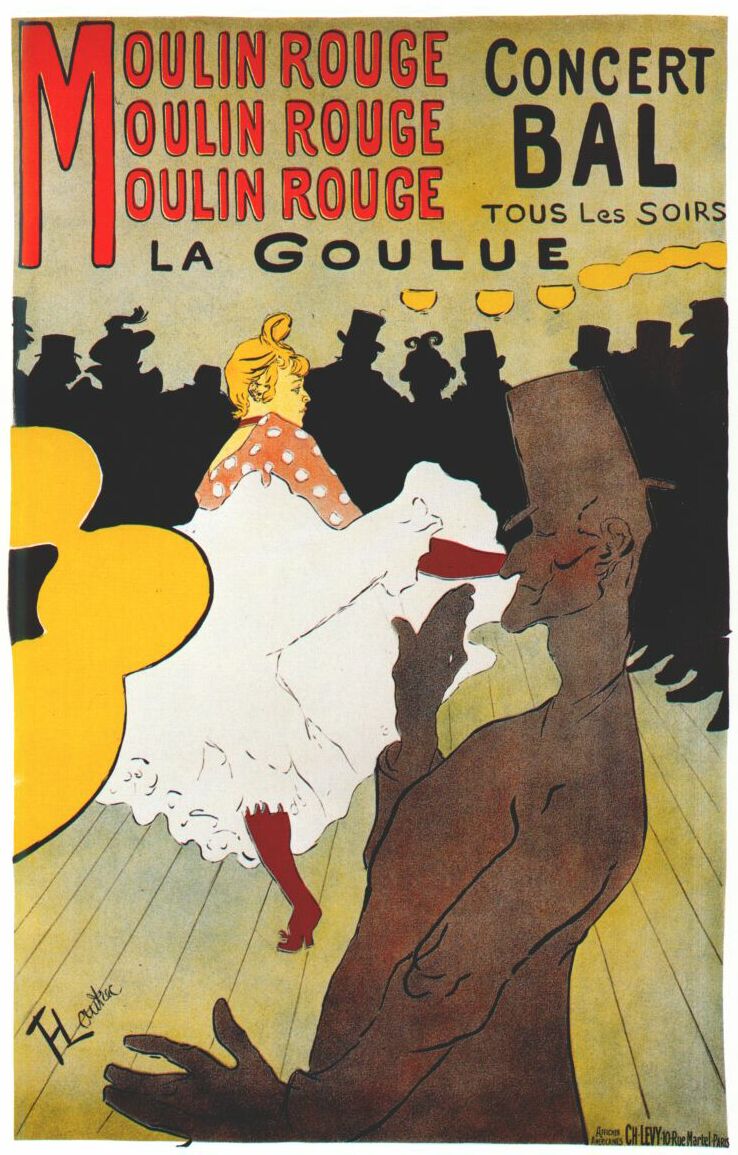
“Moulin Rouge: La Goulue,” Henri de Toulouse-Lautrec, 1891 (Photo: Wikimedia Commons [Public Domain])
Toulouse-Lautrec was remarkably prolific.
A famous jack-of-all-trades, Toulouse-Lautrec produced an outstanding number of artworks throughout his career. In less than 20 years, he created 275 watercolors, 363 posters, 737 canvased paintings, and 5,084 drawings.
Today, the Musée Toulouse-Lautrec in Albi, France, houses the largest permanent collection of his work, numbering over a thousand.

“At the Moulin Rouge,” 1892 (Photo: Wikimedia Commons [Public Domain])
Related Articles:
The Controversial Life and Art of Post-Impressionist Painter Paul Gauguin
Van Gogh: How the Post-Impressionist’s Work Evolved During His Short Life
Why Post-Impressionist Painter Paul Cézanne Is Known as the “Father of Modern Art”











































































